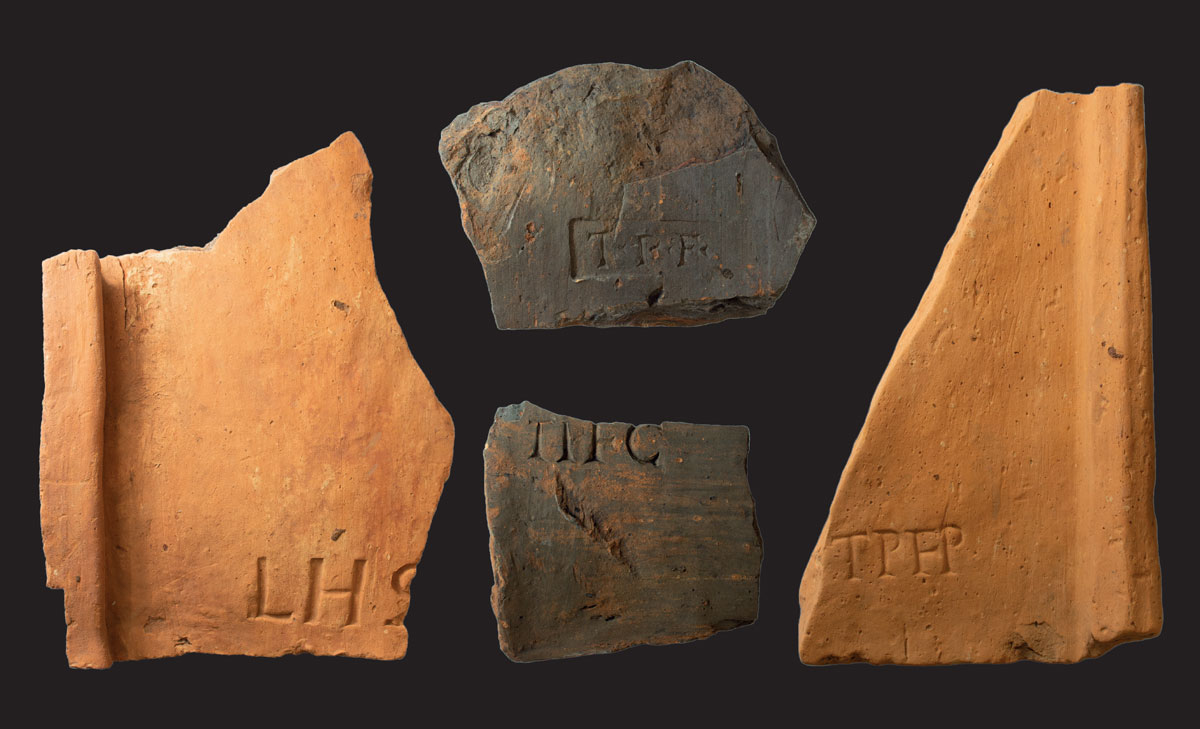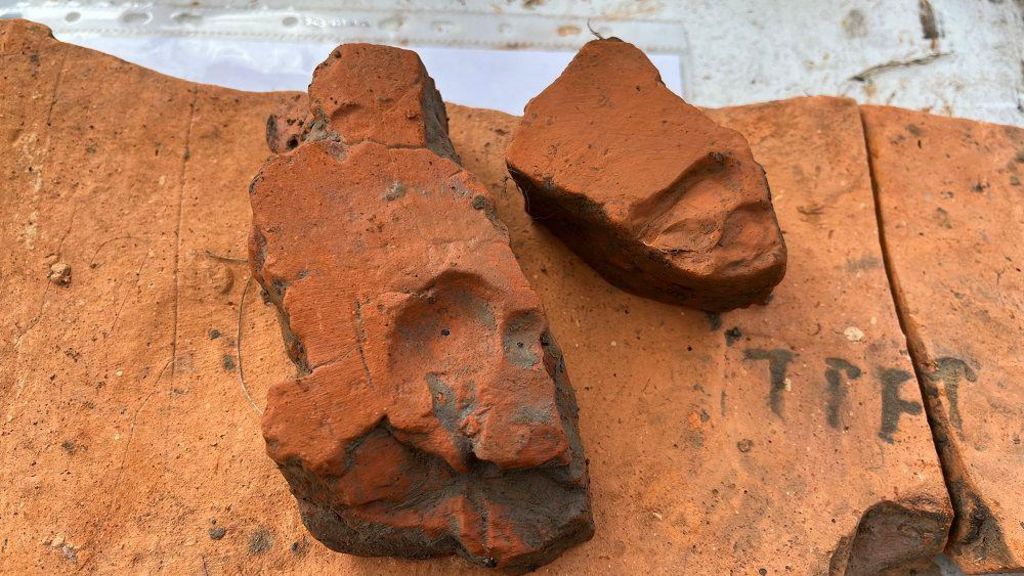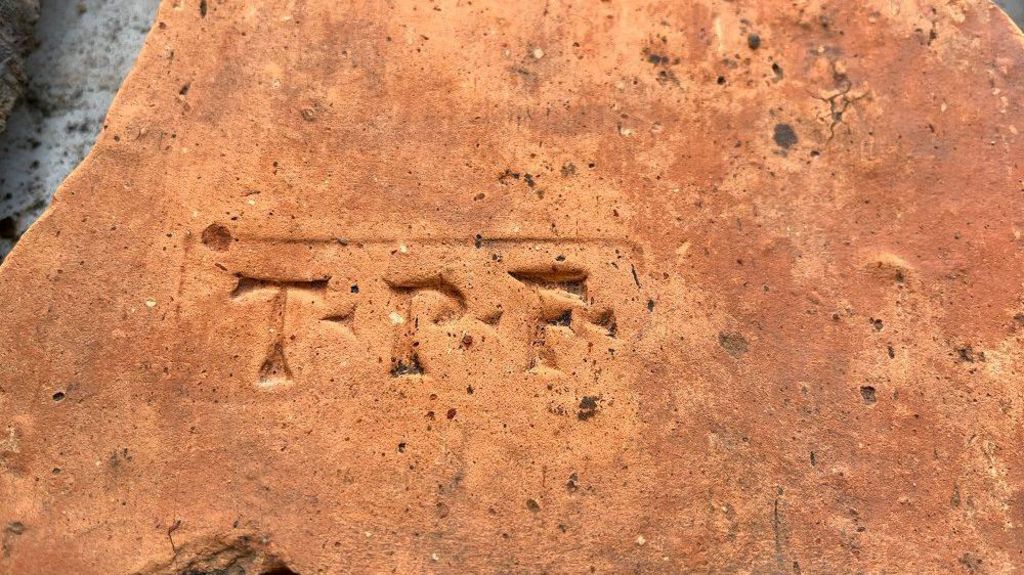Skip to comments.
'Amazing discovery' that helped build Roman Britain
BBC News, Wiltshire ^
| 6 days ago (August 7, 2024)
| Sophie Parker
Posted on 08/13/2024 9:43:19 AM PDT by SunkenCiv
The site of a kiln that was used in the building of Roman Britain's second-largest town is being excavated.
Archaeologists and volunteers have spent some of the past three years working to uncover more of the kiln, which they have said was used to build Cirencester, in Gloucestershire, and other places.
Tiles from the site at Brandier, a tiny hamlet near Minety in Wiltshire, have markings found on artefacts over a large area - as far as Old Sarum, near Hereford, the Cotswolds and Reading...
Neil Holbrook - CEO of Cotswold Archaeology which is running the dig - explained that 200 years ago an expert found a stamped tile in a Roman villa near Cirencester, saw the letters stamped on it and wondered where it came from.
Now the site, which he described as what would have been a "major regional industry" for creating Roman buildings, is being excavated...
He said the kiln would have been in use for about 150 years until stone tiles became more popular.
The tiles being found are generally rejects from the time, and other waste material from the kiln which Mr Holbrook said would have been a "bit like a pizza oven"...
Tiles are not the only artefact found there - Mr Warry pointed out something known as a "spyhole".
It would have been embedded in the roof of the kiln so workers would check on how the tiles were progressing.
(Excerpt) Read more at bbc.com ...
TOPICS: History; Science; Travel
KEYWORDS: brandier; cirencester; corinium; cotswolds; godsgravesglyphs; kiln; minety; romanempire; tiles; wiltshire
Roman Tile Works Unearthed in England | Archaeology Magazine | August 8, 2024 | BBC News reports that an 1,800-year-old kiln has been discovered just underneath the surface of the ground on private land in southwestern England. Stamps on tiles recovered at the site suggest that it had been the municipal tile works for the Roman town of Corinium, which is now known as Cirencester. Anton Beechey of Cotswold Archaeology said that most of the kiln would have been underground, while the firing chambers would have been aboveground. The underground walls of the structure have been well preserved. The kiln's spyhole, which would have been embedded in the roof of the kiln so that workers could check on the firing process, was also recovered. Repurposed roof tiles found on the floor of the site are thought to have served as drains to handle the rainy British weather, said Neil Holbrook of Cotswold Archaeology. "The last thing you want is water getting into your kiln, it would put the fire out," he explained. Many handmade tiles have also been uncovered. It appears some of them were rejected because animals or children had left footprints on them, added Roman tile expert Peter Warry. Overall, he said that the tiles were very well-made, and some of them would have been used to construct heated floors and baths.© Cotswold Archaeology (Rosanna Price)

1
posted on
08/13/2024 9:43:19 AM PDT
by
SunkenCiv
Tiles were often rejected because animals or children would walk on themBBC

2
posted on
08/13/2024 9:43:47 AM PDT
by
SunkenCiv
(Putin should skip ahead to where he kills himself in the bunker.)
Many of the stamped tiles have "TPF" which is believed to be the mark of the public tile works for Cirencester (or Corinium as it was then)BBC

3
posted on
08/13/2024 9:44:06 AM PDT
by
SunkenCiv
(Putin should skip ahead to where he kills himself in the bunker.)
To: nutmeg
4
posted on
08/13/2024 9:44:42 AM PDT
by
nutmeg
To: StayAt HomeMother; Ernest_at_the_Beach; 1ofmanyfree; 21twelve; 24Karet; 2ndDivisionVet; 31R1O; ...
Time Team classic fans have seen tiles that were used for a wide variety of purposes, such as nesting floor shims for hypercausts, hollow walls for private calderiums in the baths, as well as roof tiles and other prefab architectural elements.

5
posted on
08/13/2024 9:46:23 AM PDT
by
SunkenCiv
(Putin should skip ahead to where he kills himself in the bunker.)
To: SunkenCiv
Ist draft:
“One Tile to rule them all,
One Tile to find them,
One Tile to bring them all
and in the darkness bind them.”
6
posted on
08/13/2024 10:40:45 AM PDT
by
Rinnwald
7
posted on
08/13/2024 10:54:38 AM PDT
by
Bigg Red
(Trump will be sworn in under a shower of confetti made from the tattered remains of the Rat Party.)
To: Rinnwald
8
posted on
08/13/2024 11:43:23 AM PDT
by
SunkenCiv
(Putin should skip ahead to where he kills himself in the bunker.)
Disclaimer:
Opinions posted on Free Republic are those of the individual
posters and do not necessarily represent the opinion of Free Republic or its
management. All materials posted herein are protected by copyright law and the
exemption for fair use of copyrighted works.
FreeRepublic.com is powered by software copyright 2000-2008 John Robinson



